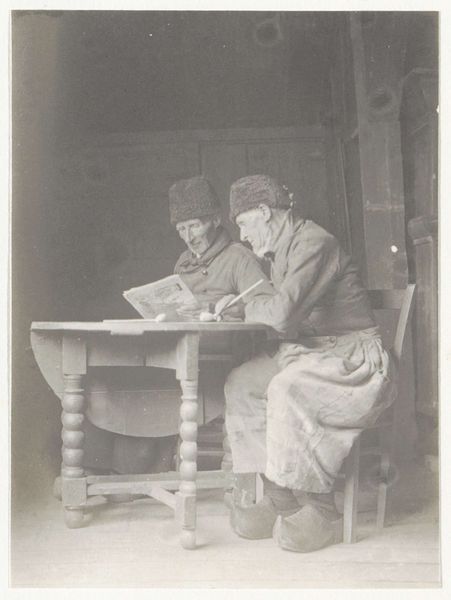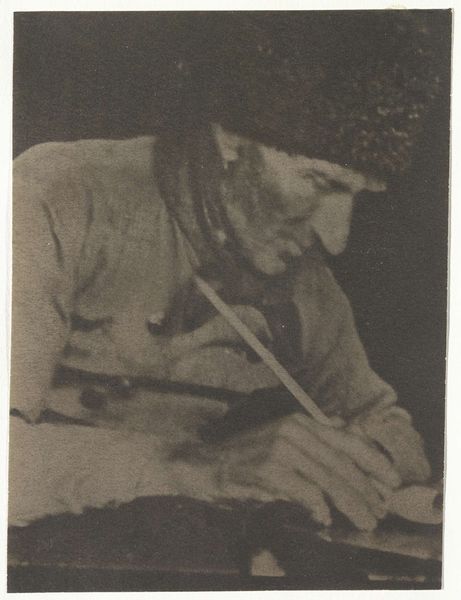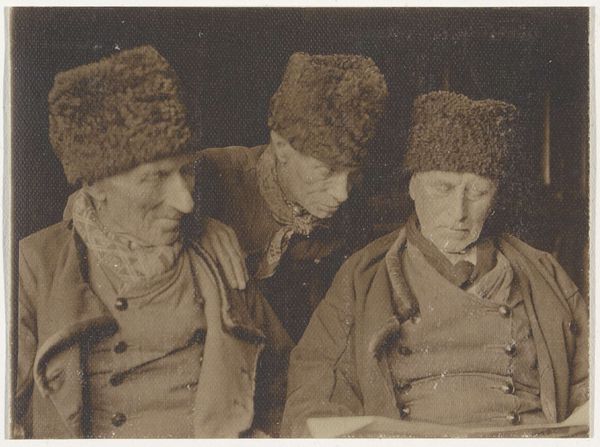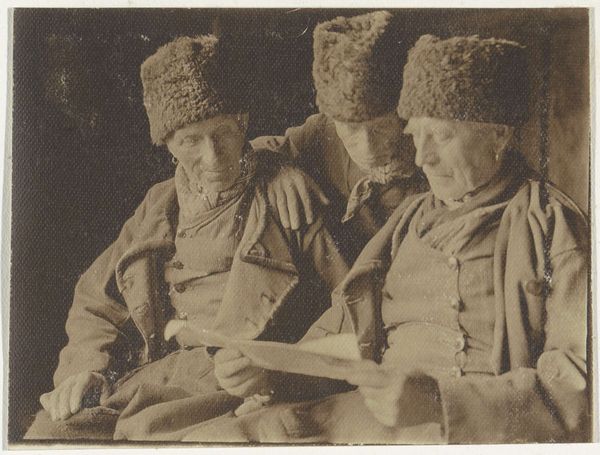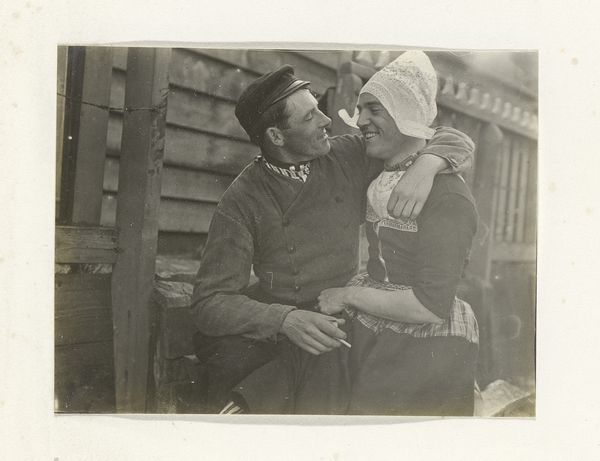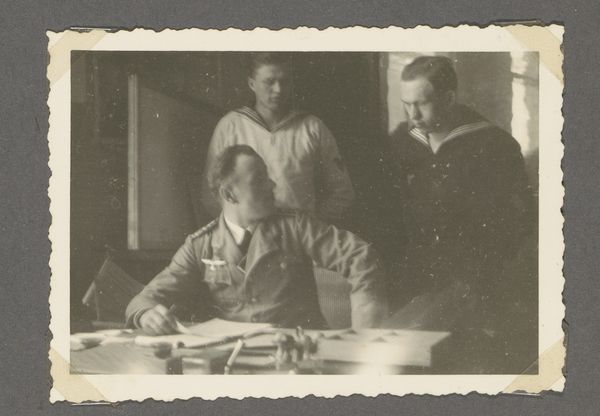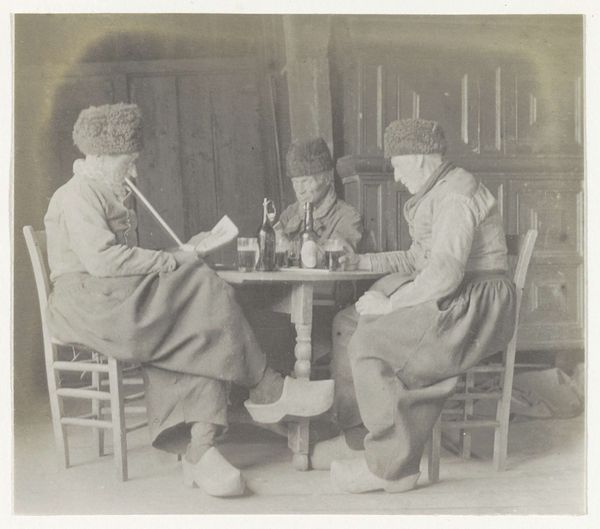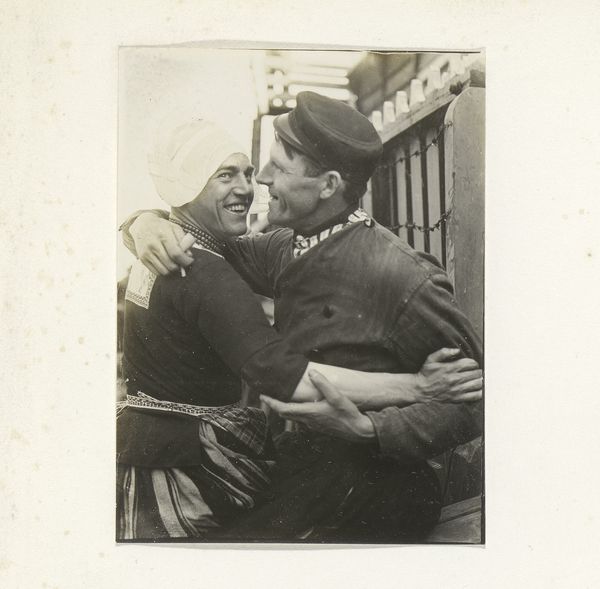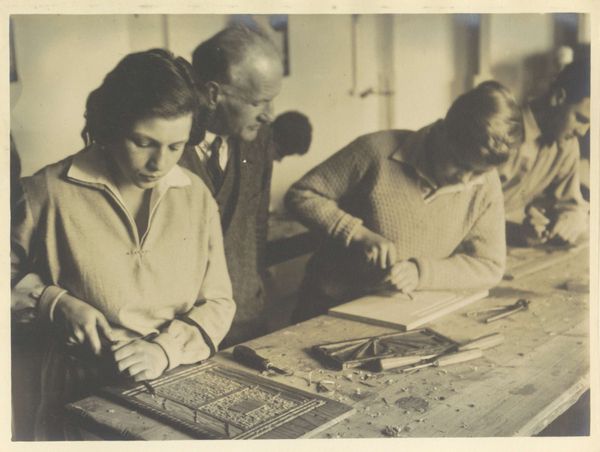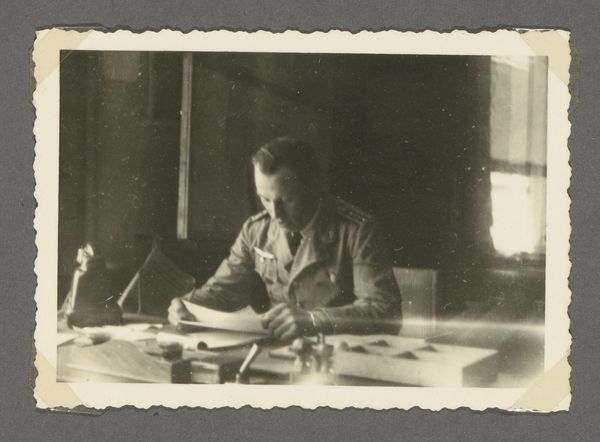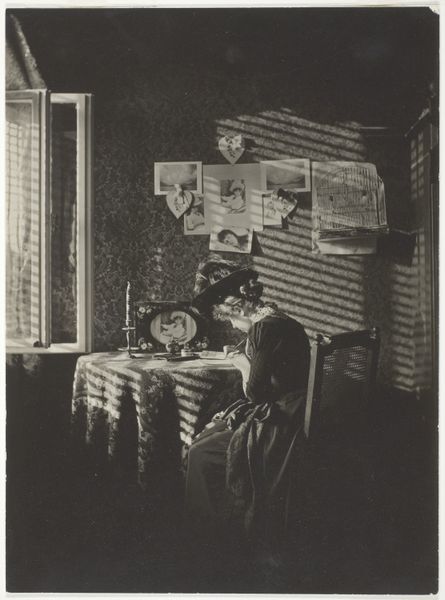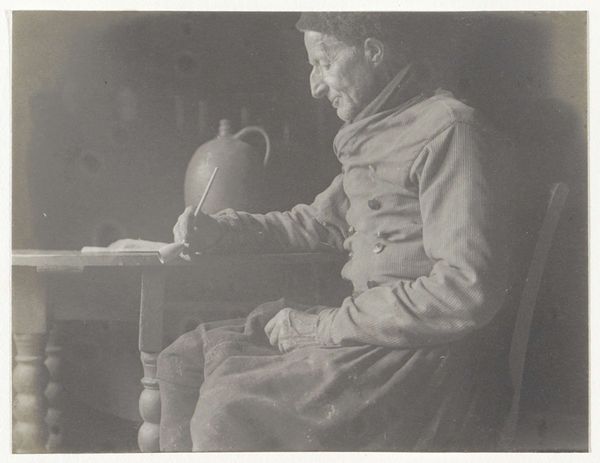
Portret van twee mannen in Volendamse klederdracht, zittend aan een tafel c. 1900 - 1910
0:00
0:00
photography
#
portrait
#
dutch-golden-age
#
photography
#
portrait reference
#
genre-painting
#
realism
Dimensions: height 89 mm, width 64 mm
Copyright: Rijks Museum: Open Domain
Curator: Looking at this striking image, "Portret van twee mannen in Volendamse klederdracht, zittend aan een tafel," captured sometime between 1900 and 1910 by G. Hidderley, what strikes you first? Editor: The concentration, definitely. Both men are deeply focused on what they're doing, heads bent, almost like a secret being shared on the table in front of them. Curator: Yes, and that intensity tells a story. Considering it was taken during a time when photography was increasingly used for documentation, how might this portrait function beyond simply depicting these two men? Volendam was quite an attraction for artists and tourists at the time, you know. Editor: Exactly, and the very act of photographing men in traditional Volendam attire brings the process of cultural representation into the forefront. Look at the materiality of their clothing—the fabric, the intricate patterns around the neck, even the fur hats seem deliberately chosen and positioned to emphasize their cultural identity. It speaks to the commodification of culture. Curator: Interesting point. I see the photographer also plays a role in staging and disseminating these identities. Photographers of this period acted as brokers, reinforcing or even constructing popular ideas of the "typical" Dutchman for both domestic and international consumption. They knew there was a market for exotic imagery. Editor: And how were these photographs disseminated? Were they postcards, used in ethnographic studies, displayed in exhibitions? The method of circulation tells us about its audience. This portrait could serve both nostalgic longings and reinforce stereotypes about Dutch life for consumption. Curator: Perhaps both! And that tension between documentation and constructed imagery, especially regarding cultural identity, is a recurring theme in photography from this era. What remains powerful, even today, is this portrait opens doors to question how identities are performed and sold. Editor: Agreed. Examining these visual relics and unpacking these old narratives enables us to unravel our present complex tapestry of culture and heritage. Curator: Absolutely. It's always enlightening when we peel away the layers of time to see not just what’s depicted, but why.
Comments
No comments
Be the first to comment and join the conversation on the ultimate creative platform.
